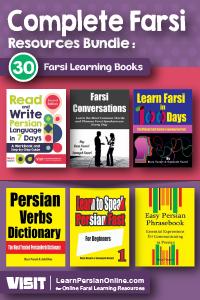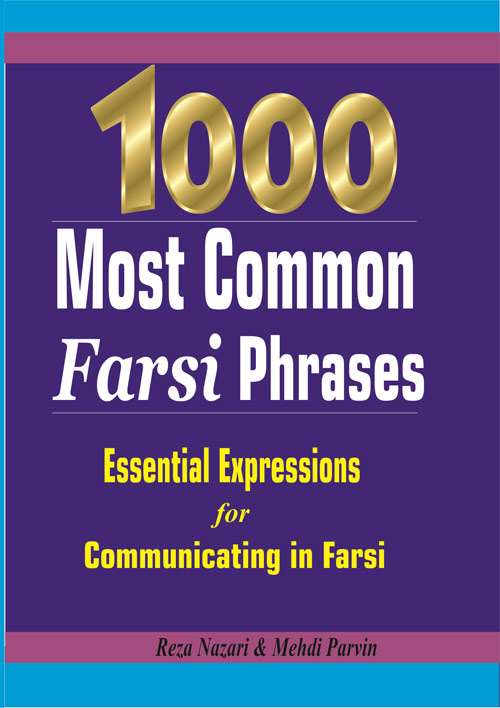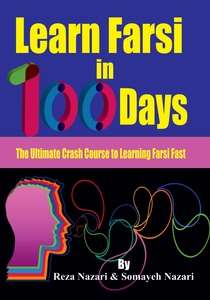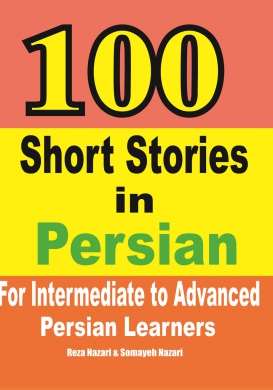
Multilingualism is a great thing. Learning a foreign language can make you more competitive in the job market and science has shown that bilingualism can improve your brain while holding back conditions like dementia.
Learning a foreign language is a huge challenge, it is also immensely satisfying. Here are a few tips from experts which can help you become fluent in Persian.
Best Farsi Learning Resource!
1. Know why you’re studying Persian

Actually, learning a language is not something you can just pick up and put away as you please. As Language Testing International points out, some languages can take up to 2760 hours to learn well and proficiently. In fact, no one can do that much work on their own time without serious motivation.
What that motivation is, can vary from person to person, but make sure you have a real reason to learn Persian beyond mere curiosity or impressing your peers. Write it down where you can see it (such as, on the door of your room) to keep yourself motivated.
2. Learn core words first

No one can memorize every word in Persian. Instead, there are a series of core Persian words, which account for the vast majority of what we say in everyday life. For example, in English 90 percent of texts consist of just 4000 words while 300,000 words make up the other 10 percent.
So, learn the core words first in Persian. By emphasizing those words, you can quickly get to a level where you can hold a conversation. Making visible progress like that, can keep and improve your motivation for the next level.
FREE ONLINE Farsi Lessons:
- Learn Farsi in 100 Days Course
- Persian Alphabet
- Persian Video Lessons: Learn To Speak Persian Fast
- Persian Grammar
- Persian Vocabulary
- Persian Conversation
3. Practice

As we pointed out above, learning a language to a proficient level can take up to 2760 hours. If you are studying Persian for two hours a day, five days a week, that is over five years of work.
That means it is important to regularly practice. You can’t just do a lot of practice and learn Persian for one day and then take three days off. Actually, what knowledge you learn in that one day will decay in those few days. Set a regular schedule and stick to it. If you can make learning Persian a routine, the battle is partly won.
4. Watch Persian media

Some learners use Persian textbooks to learn basic to intermediate grammar and words, but there is a catch. Those textbooks only teach a very formal version of Persian. The result is that when you speak like a textbook in front of a native Persian speaker, you will sound very strange.
So you should expose yourself to Persian beyond mere study guides. Persian media is a great way to immerse yourself. Even if you do not understand what they are saying, noticing the tone and pitch used will help you to sound more natural in the future.
And turn the subtitles off.
5. Don’t be scared of mistakes

Everyone believes that young kids are much better at learning languages compared to adults, but one study from the journal Second Language Research has shown that “the age at which second language acquisitions begins is not a significant factor.”
So if kids are not actually better at learning languages, why do we think that? One reason is that, unlike adults, kids don’t get embarrassed when they make a speaking or grammar mistake. Adults do, and actually, this can in the worst-case scenario lead to perfection paralysis. Learners become so worried about making a mistake that they stop trying to move forward and improve.
In fact, mistakes are a part of learning any language. Don’t worry about making them.
6. Speak with native Persian speakers

Speaking with a native Persian speaker is the single best way to improve your language skills, but how can you find one? Websites like Italki or Tandem can help you connect with native speakers across the globe. Also, probe your friends and family to see if they know someone who speaks Persian.
7. Look into Persian culture

Language represents people and their culture. Actually, if you don’t value the people or the culture, then you don’t value the language. Please think about how the Eskimos have 50 words for “snow.”
So make an effort to learn about Persian culture if you want to know the Persian language. Films and series are a good place to start, but news shows, newspapers, and even Internet memes can teach you what the people you are studying are interested in. Doing so will teach you new words and Persian phrases that you would not have learned otherwise and will help you understand that a new language can help you open up an entirely new world for you to explore.
Don’t Give Up!
According to Vamos Spanish Academy, Learning a language is a big challenge. Actually, when you have spent hours not making any real progress and fumbling your speech, it is easy to wonder if this is really such a good idea.
But bilingualism is a really valuable tool where the rewards will easily make up for the effort. Remember the reasons why you decided to practice Persian and the fact that requires constant long practice. Fluency only depends on time and effort. The point is, if you make a true effort to immerse yourself in the language, understand the culture, and practice as much as you can, you will find yourself knowing a language that can enrich your life and teach you new perspectives.
Special Offers!
by: Learn Persian Online Team about (category: Blog)

















What people say about "7 Steps to Mastering Persian Language"?
No one replied yet.